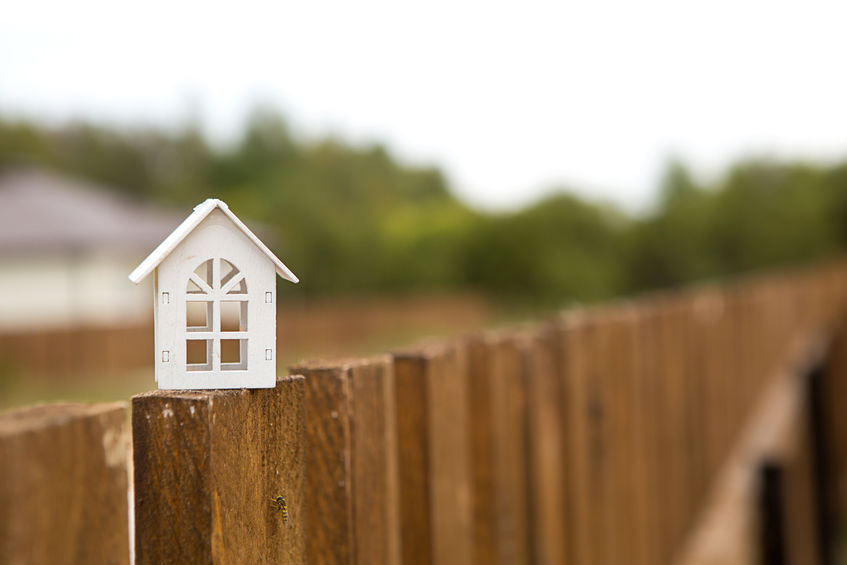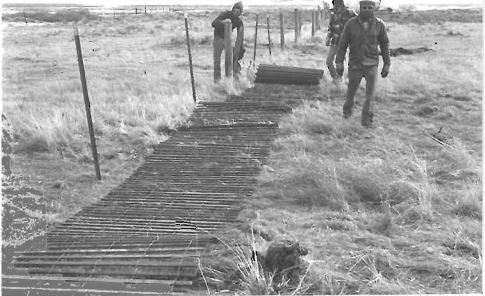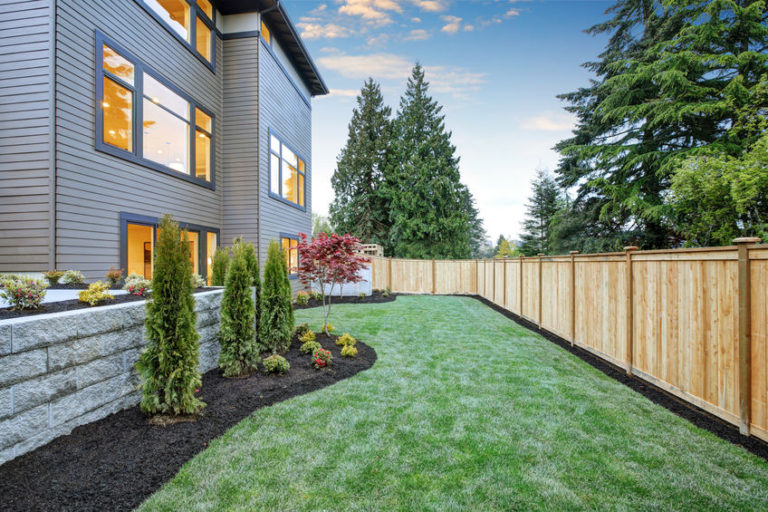You may be considering a 6-foot vinyl fence (sometimes the required style choice by neighborhood HOAs) for your backyard so your dog can play. For a small backyard or residential lot, a picket-style semi-privacy fence may be the best choice to let in a little bit more air and sunlight. You may think picket looks better, especially with the style of your home. What if your spouse prefers a full privacy fence with lattice on top? Is any particular type of fence more desirable or less of a turn-off to home buyers?

If you live in a neighborhood with a homeowners association (HOA), start by checking your by-laws to see if there are any fencing restrictions in place when it comes to materials or height. Your HOA is the best source for this information, especially if you have to get approval from the Board first. Keep the style of your home in mind when choosing a fencing material; a fence that complements the existing style of your home will enhance your curb appeal and carries the best chance to improve your home value.
The type of fence is not going to realistically be a major consideration for most home buyers. When you decide it’s time to sell your property, your buyer will most likely care that the fence was maintained well and that it’s in good shape and it won’t need thousands of dollars to repair or replace it. Install the fence that looks good to you, especially if you intend to continue living there for a while.
Fencing Material
Your fence could become a valuable asset or it could force the value of your property down based on the material it’s made from. Wooden fences or other solid fences like concrete or wrought iron could net as much as 50 percent of the cost of materials and installation on resale. The look of a solid fence is considered more aesthetically pleasing than other options.
Every fence won’t significantly increase your home’s value. A chain link fence is a less costly option when installing the fence but it won’t increase the resale value as much because as a style of fence it’s considered less aesthetically pleasing.
The Best Fence for Resale Value: Choose a Classic Look
This doesn’t mean that you should always choose a design that’s boring so that it doesn’t offend anyone. While it is impossible to please everyone, a classic fencing styles will remain attractive no matter what decade you see them in. These three fencing styles have by and large accounted for the vast majority of my work and what I see going up in my city, and there’s a reason for that. They’re reliable, useful, and they look great if kept in good shape.
- Wood (moderately priced, good for privacy)
- There are many different types of wood fences to choose from, though the most common wooden fencing material today is cedar. If the posts are surrounded by concrete and kept from absorbing moisture, and the panels, boards and rails are well-sealed on a regular basis, security and privacy fences made from wood can last a long time. Fasteners should be corrosion resistant and the seams should be treated with sealer to avoid decay and other problems of aging and weathering materials. A wooden fence will stay in good shape and last last a long time if water and UV rays are kept from breaking it down. If the fence remains unprotected, it becomes less durable over time and will evolve into an unattractive, failing fence that won’t add value to your property and could decrease property value in the worst case scenario.
- Wooden Picket Fence:
- The wooden picket fence is indicative of American colonial style homes more than any other type of fence. When paired with these homes, the property becomes a whole greater than the sum of the parts. The general rule that the fence should go with the house and the yard, or accentuates them in some way is an important factor when evaluating the affect a fence can have on the value of a home or property. A white picket fence around the right house creates a coherent whole while also delineating the yard and providing some measure of security.
- Wooden Privacy or Security Fence:
- The most common type of fence in the American residential landscape is probably the wooden security fence. This kind of fence can be a beautiful choice that is friendly to most budgets while being relatively inexpensive to build with a reasonably long life. They are easily customizable, and can be integrated with other yard structures like decks, pergolas, and trellising systems. The upfront costs are reasonably low but homeowners should be aware that these fences invariably accrue maintenance and repair costs within just a few years.
- Vinyl (expensive, decorative, low-maintenance)
- Maybe you want to create privacy and shut out street noise–then you want to go with something more solid. “Plastic white-picket fences are popular because of (the maintenance factor),” says Goodhart. Many white picket fences are vinyl (a type of plastic), which requires no maintenance whatsoever aside from the occasional hose down.
Vinyl Fencing is simply a great way to improve curb appeal to any form of property. The classic white picket fence look is an elegant way to enhance the way one’s home looks and makes it stands out, while the screen fence models give you complete privacy.
They will add instant curb appeal and value to your home. There are many different styles of vinyl fences, but one thing is consistent: a vinyl fence is a beautiful addition to your backyard that is sure to add value to your home.
- Wrought iron (expensive, decorative, higher maintenance) or Aluminum (expensive, low maintenance):
- Black wrought iron has a nearly universal and timeless beauty. Modern variations, made with aluminum or galvanized steel and protected by special coatings, have the same look while leaving behind the need for maintenance. These steel fences evoke a bygone charm (perfect for Victorian houses) and fit in seamlessly with a modern aesthetic when constructed in the classic rail and picket style. Options like finial toppers for pickets and other ornamental accessories make these ornamental metal fences more than just a utilitarian barrier. These are some of the best choices for front yard fences since they don’t block the view to or from the house .
Finding Long-Lasting Durability and Easy Maintenance
Durability matters to most buyers, which affects resale value. Those who fall into the ‘fast fix’ camp might bump up property value and appearance for a time, but that same fence might detract from the home a few years down the road. That’s why it’s important to choose durable materials that will remain so for a long time. Most of the fences I’ve installed to spruce up a home have either been made of wood or steel. Both offer decent durability, if you choose the right type.
Steel: While a well-built wooden fence is typically solid enough for most people’s needs, steel is several magnitudes stronger than wood. While steel fences have always been strong, they have also been prone to rusting and breaking down, especially at the welds. This pattern of corrosion also eats into any value the fence might provide to a property by making the fence unreliable and unstable. Fortunately, there are steel fences that don’t break down so readily. Most manufacturers are now using a powder coating that helps protect the steel, especially from UV rays. Other manufacturers are also an e-coat underneath that powder coat that seals the steel from any moisture that might come through the slightly porous powder paint. The coating also has a sufficiently tight bond that scratches, dents, and other damage from wear and tear don’t easily open up access points into the steel core. This coating cuts down dramatically on the maintenance that would normally go with a steel fence, such as hours of wire brushing, repainting, and sealing.
It’s clear that different situations will call for one kind of fence over another. My tendency is to fall in the ‘looking down the road’ camp and focus on finding the very best, because I believe that that’s what will add value in the long-term. When steel fencing is the best fit for a house, I pick one with excellent protective coatings and high-quality welds.
Fence Maintenance
A fence needs to be well maintained over the years, even when it’s built very well. A wood fence is the type of fence most likely to raise the value of your home. It is especially important to stain or seal the fence to prevent it from being destroyed by termites, becoming discolored or rotting over the years.
If a fence is maintained properly over time, is built well and with quality material, a fence has the potential of significantly increasing the value of your home when you decide to sell. If you’re considering this type of investment, ensure that your fence will look good as new when you’re ready to sell your home. The idea is to make your fence appear fresh and new. If it’s beyond repair, the best bet is to tear it down.
What do buyers want in a fence?
A good fence provides privacy and protection. When homebuyers are looking for fences when house hunting, it’s because they need to keep pets and children contained and safe.
Even more frequently than families with children, for homebuyers with dogs, the fence is a top priority. This is especially true if the home is situated on or near a busy street. A fence is big perk for many millennials. The desire to have a yard and space for their dog influenced 33% of millennials’ decision to buy their first home.
In more urban areas, privacy fences are popular as privacy is important to many homebuyers. Homebuyers like, without the watchful eye of nosy neighbors, to picture themselves relaxing in the backyard. Homeowners appreciate privacy fences so they have some space of their own.
Will a fence increase your home’s value?
An appraiser who evaluates your house during the course of the sale will look at the fence and either add or subtract value based on its condition and what buyers are looking for. xperienced realtors will say that all staging and renovations, whenever you are improving the house, is going to help your home sell faster.
A fence is no small project to take on. And if it’s not going to directly add value to your property before you sell, you’re better off improving the inside of the home or, for instance, your landscaping, in more tangible ways.
Fences, if well-maintained, are a valuable investment. You may personally enjoy the perks that come with having a fence, which can create a private outdoor living space perfect for letting your pets run free. An attractive fence around your home also wins bonus points for instant curb appeal.



